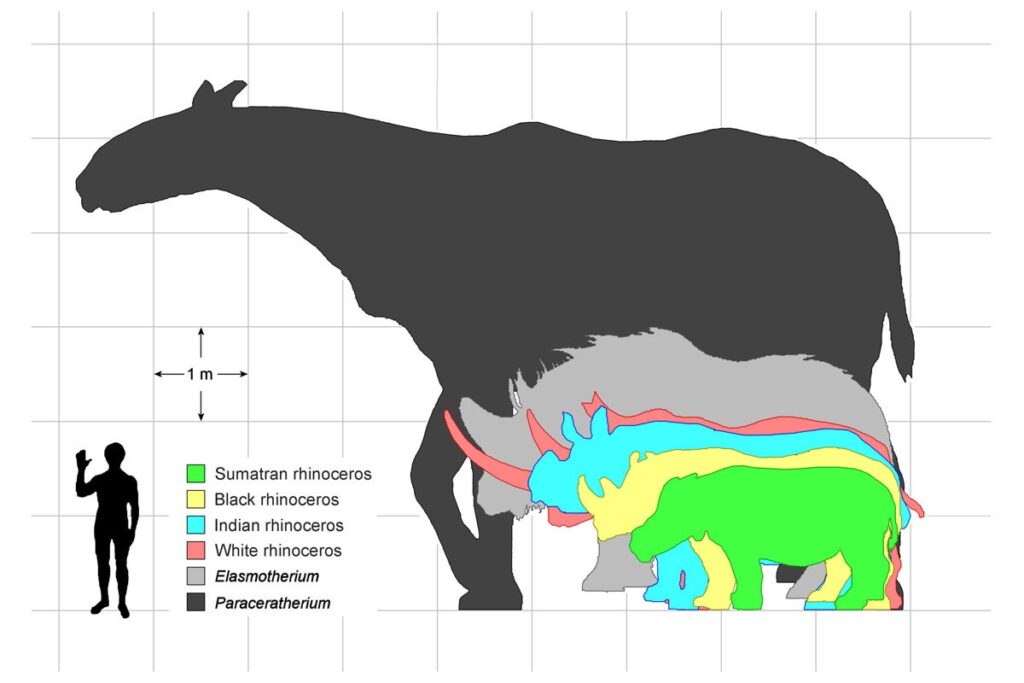
New research suggests that the mythical-sounding Siberian unicorn, a massive, horned rhinoceros, went extinct due to climate change, not human interference.
Scientists from Australia and around the world have made a groundbreaking discovery that challenges previous theories about the extinction of the Siberian unicorn. Their research, published in Nature Ecology and Evolution, reveals that this ancient creature lived alongside humans for thousands of years, eventually succumbing to the harsh effects of climate change.

The Siberian unicorn, scientifically known as Elasmotherium sibiricum, was once thought to have disappeared around 200,000 years ago. However, the new study, based on DNA analysis and dating of fossil remains, suggests that it persisted until as recently as 36,000 years ago.

The researchers believe that the Siberian unicorn’s demise was primarily caused by a decline in grassland, a crucial part of its diet. As the climate cooled and glaciers advanced, the amount of suitable habitat for this large herbivore dwindled. This, combined with the challenges posed by the changing environment, ultimately led to its extinction.

This new evidence casts doubt on previous theories that suggested humans played a significant role in the disappearance of the Siberian unicorn. While early humans did coexist with this ancient creature, it seems that their impact was minimal compared to the devastating effects of climate change.

The findings of this study offer valuable insights into the complex interplay between climate and biodiversity. As the world continues to grapple with the challenges of climate change, understanding how past extinctions occurred can help us better appreciate the fragility of our planet’s ecosystems and the urgent need for conservation efforts.

Actually they’re quite common around these parts, ya know! Me blinking dog dragged one home just the other day and it’s a awful fuss to get rid of the stinkin thing … horn fetched a bit o some for the pocket, but it weren’t worth the hassle and it’s gonna take some time to get the stench from the cellar!
Oh, darn, you spoiled my fun, I was going to say something like that about the horn. Actually, I guess you could retire on the money from that, if it would go for the same price per pound as today’s rhinoceros. And it would probably go for more than that, being so big. Might be worth a trip to Siberia.
J’aime. je veux les informations en Français
Nothing like a unicorn but very like a rhino.
It’s rhinocorn. It identifies as a transpecies.
Clone it! Bring it back!
That would be cool
I LOVE All your shows!!!
Looks like a giant sloth to me
I’ve always wondered what scripture meant when it mentioned unicorns. They’re described as being powerful and unable to control. By the looks of this, I can understand now. With that being said, people in Old Testament times were familiar with these animals so I doubt they died 38,000 years ago. Who comes up with these numbers anyway?
People don’t come up with carbon dating. In the earths poles there is a pattern of ice forming a new layer each year, you can count the layers like the rings of a tree. There are millions of layers. Carbon dating is taking a sample of the fossil to check the carbon content in the atmosphere of its time, and matching it with the carbon content of the ice layer it corresponds with.
Scientists
This New Earth notion is absolutely unscientific and therefore ridiculous. Religious faith does NOT require blind acceptance of pure hogwash!
I can relate to that. Ardent lefty retired alone to TinyTown in blood-red state. An exercise in survival!
The horn shown must be a reconstruction. Per Wikipedia “A 2021 study challenges assumptions of Elasmotherium [the genus of which the Siberian Rhinoceros is a species] having had a horn by comparing its cranial dome and neck musculature to those of modern rhinos. The study finds that both are ill-suited for a large horn and more likely are indicative of a smaller horn.” Plus, since Rhino horns are made of keratin, they don;t usually fossilize. If the animal shown was frozen, then why the results of the 2021 study?
А найдены ли какие-нибудь артефакты? Сам рог на фотографии подлинный?